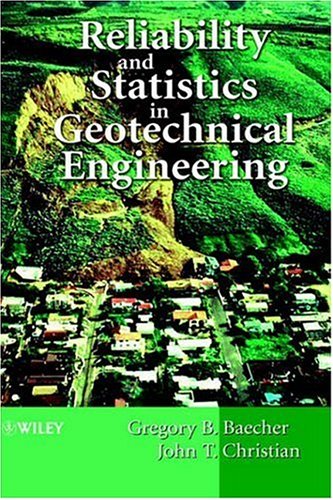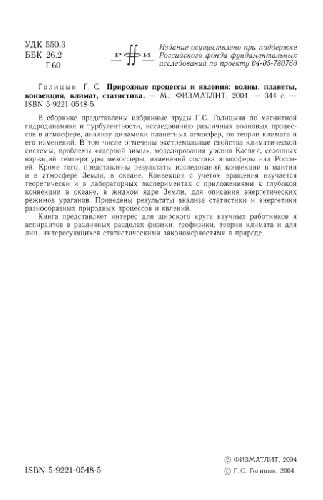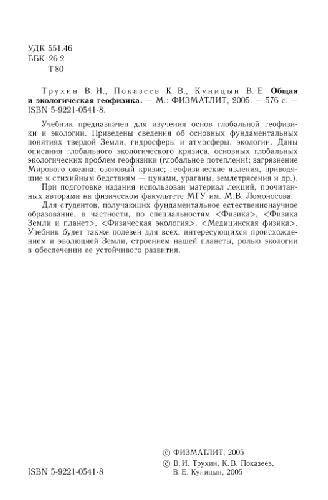Gregory Baecher, John Christian0471498335, 9780471498339, 9780470871256
Integrating theory and practical applications, this book: Discusses the nature and philosophy of uncertainty in geological and geotechnical engineering. Addresses fundamentals and limits of probabilistic and statistical methods in the geological and geotechnical context. Develops statistical approaches to site characaterization decisions and for analyzing field and laboratory data. Explains traditional and emerging risk analysis methodologies and provides guidance for their use. Presents many applications of statistics, reliability, and risk techniques to practical problems.
Emphasizing both theoretical underpinnings and practical applications, this comprehensive text constitutes an invaluable reference for practising geotechnical engineers, geologists, university students, and civil engineers in general practice.
Table of contents :
Reliability and Statistics in Geotechnical Engineering……Page 3
Contents……Page 7
Preface……Page 13
Part I……Page 15
1 Introduction – uncertainty and risk in geotechnical engineering……Page 17
1.1 Offshore platforms……Page 18
1.2 Pit mine slopes……Page 25
1.3 Balancing risk and reliability in a geotechnical design……Page 27
1.4 Historical development of reliability methods in civil engineering……Page 28
1.5 Some terminological and philosophical issues……Page 29
1.7 A comment on notation and nomenclature……Page 31
2.1 Randomness, uncertainty, and the world……Page 33
2.2 Modeling uncertainties in risk and reliability analysis……Page 37
2.3 Probability……Page 40
3.1 Histograms and frequency diagrams……Page 49
3.2 Summary statistics……Page 52
3.3 Probability theory……Page 55
3.4 Random variables……Page 58
3.5 Random process models……Page 62
3.6 Fitting mathematical pdf models to data……Page 70
3.7 Covariance among variables……Page 74
4.1 Frequentist theory……Page 79
4.2 Bayesian theory……Page 83
4.3 Prior probabilities……Page 87
4.4 Inferences from sampling……Page 92
4.5 Regression analysis……Page 97
4.6 Hypothesis tests……Page 102
4.7 Choice among models……Page 109
5.1 Risk……Page 111
5.2 Optimizing decisions……Page 120
5.3 Non-optimizing decisions……Page 132
5.4 Engineering judgment……Page 135
Part II……Page 141
6.1 Developments in site characterization……Page 143
6.2 Analytical approaches to site characterization……Page 145
6.3 Modeling site characterization activities……Page 149
6.4 Some pitfalls of intuitive data evaluation……Page 152
6.5 Organization of Part II……Page 157
7 Classification and mapping……Page 159
7.1 Mapping discrete variables……Page 160
7.2 Classification……Page 161
7.3 Discriminant analysis……Page 167
7.4 Mapping……Page 182
7.5 Carrying out a discriminant or logistic analysis……Page 187
8 Soil variability……Page 191
8.1 Soil properties……Page 194
8.2 Index tests and classification of soils……Page 197
8.3 Consolidation properties……Page 201
8.4 Permeability……Page 203
8.5 Strength properties……Page 205
8.6 Distributional properties……Page 208
8.7 Measurement error……Page 215
9.1 Trends and variations about trends……Page 219
9.2 Residual variations……Page 228
9.3 Estimating autocorrelation and autocovariance……Page 242
9.4 Variograms and geostatistics……Page 253
Appendix: algorithm for maximizing log-likelihood of autocovariance……Page 255
10.1 Stationary processes……Page 257
10.2 Mathematical properties of autocovariance functions……Page 260
10.3 Multivariate (vector) random fields……Page 262
10.5 Functions of random fields……Page 263
11.1 Concepts of sampling……Page 271
11.2 Common spatial sampling plans……Page 272
11.3 Interpolating random fields……Page 278
11.4 Sampling for autocorrelation……Page 282
12.1 Brief history of search theory……Page 287
12.2 Logic of a search process……Page 289
12.3 Single stage search……Page 293
12.4 Grid search……Page 294
12.5 Inferring target characteristics……Page 300
12.6 Optimal search……Page 304
12.7 Sequential search……Page 312
Part III……Page 315
13.1 Loads, resistances and reliability……Page 317
13.2 Results for different distributions of the performance function……Page 320
13.3 Steps and approximations in reliability analysis……Page 324
13.4 Error propagation – statistical moments of the performance function……Page 325
13.5 Solution techniques for practical cases……Page 332
13.6 A simple conceptual model of practical significance……Page 333
14 First order second moment (FOSM) methods……Page 337
14.1 The James Bay dikes……Page 338
14.2 Uncertainty in geotechnical parameters……Page 339
14.3 FOSM calculations……Page 341
14.4 Extrapolations and consequences……Page 351
14.5 Conclusions from the James Bay study……Page 354
14.6 Final comments……Page 356
15.1 Mathematical background……Page 359
15.2 Rosenblueth’s cases and notation……Page 361
15.3 Numerical results for simple cases……Page 365
15.4 Relation to orthogonal polynomial quadrature……Page 367
15.5 Relation with ‘Gauss points’ in the finite element method……Page 369
15.6 Limitations of orthogonal polynomial quadrature……Page 371
15.7 Accuracy, or when to use the point-estimate method……Page 372
15.8 The problem of the number of computation points……Page 378
15.9 Final comments and conclusions……Page 390
16.1 Justification for improvement – vertical cut in cohesive soil……Page 391
16.2 The Hasofer–Lind formulation……Page 394
16.3 Linear or non-linear failure criteria and uncorrelated variables……Page 398
16.4 Higher order reliability……Page 405
16.5 Correlated variables……Page 407
16.6 Non-normal variables……Page 409
17.1 Basic considerations……Page 413
17.2 Computer programming considerations……Page 418
17.3 Simulation of random processes……Page 424
17.4 Variance reduction methods……Page 428
17.5 Summary……Page 444
18.1 Limit state design and code development……Page 447
18.2 Load and resistance factor design……Page 450
18.3 Foundation design based on LRFD……Page 458
18.4 Concluding remarks……Page 469
19.1 Elementary finite element issues……Page 471
19.2 Correlated properties……Page 475
19.3 Explicit formulation……Page 479
19.4 Monte Carlo study of differential settlement……Page 482
19.5 Summary and conclusions……Page 483
Part IV……Page 485
20.1 Systems failure……Page 487
20.2 Influence diagrams……Page 496
20.3 Constructing event trees……Page 502
20.4 Branch probabilities……Page 507
20.5 Levee example revisited……Page 514
21.1 Expert opinion in geotechnical practice……Page 515
21.2 How do people estimate subjective probabilities?……Page 516
21.3 How well do people estimate subjective probabilities?……Page 517
21.4 Can people learn to be well-calibrated?……Page 522
21.6 Conducting a process to elicit quantified judgment……Page 523
21.7 Practical suggestions and techniques……Page 535
21.8 Summary……Page 536
22.1 Concepts of system reliability……Page 537
22.2 Dependencies among component failures……Page 538
22.3 Event tree representations……Page 539
22.4 Fault tree representations……Page 543
22.5 Simulation approach to system reliability……Page 548
22.6 Combined approaches……Page 552
22.7 Summary……Page 568
A.2 Elementary results……Page 569
A.3 Total probability and Bayes’ theorem……Page 571
A.4 Discrete distributions……Page 572
A.5 Continuous distributions……Page 576
A.6 Multiple variables……Page 577
A.7 Functions of random variables……Page 580
References……Page 583
Index……Page 607








Reviews
There are no reviews yet.